There can be your advertisement
300x150
Brezhnevks: How They Improved Khrushchevks and Why People Still Love Them
They proved that mass housing could be not only cheap but also comfortable
Brezhnevks are the story of how the USSR learned to build 'for people'. After cramped Khrushchevks with corridors and tiny kitchens, the country decided: it's time to give citizens real comfort. Isolated rooms, spacious kitchens, elevators and garbage chutes — all the things people dreamed of in five-story buildings. Today these houses make up the golden middle of the real estate market, and here's why buyers still choose them even over new constructions.
- Breznhevks were built from 1964 to 1985 as a response to Khrushchevks' shortcomings;
- The main innovation — all rooms became isolated, eliminating corridors;
- Kitchens increased from 5-6 to 7-9 sq. m, and in some series up to 10-12 sq. m;
- Elevators, garbage chutes, separate bathrooms and balconies replaced with loggias;
- Breznhevks remain in demand on the real estate market due to well-thought-out layouts.
Why Brezhnevks Appeared: Answering Public Complaints
The reason for launching Brezhnevks was the growing dissatisfaction of the population with housing quality. The initial joy of receiving a private Khrushchevk gradually faded, and the compromise was eventually found — Brezhnevks.
After cramped and small Khrushchevks, Brezhnevks were seen as true luxury and comfort. The USSR leadership wanted to show that the country had reached a new qualitative level of development and could afford mass construction of more advanced housing for its citizens.
In 1969, the quality of residential real estate became a state goal — a separate decree was issued. In 1971, new SNiPs were developed, based on which the third generation of buildings — true Brezhnevks — began to be built.
The abandonment of Khrushchevks was also linked to the fact that five-story buildings required significant land resources in cities. Brezhnevks were distinguished by greater height (from 9 to 17 floors) and number of entrances (up to 10).
Main Improvements: What Changed for the Better
The main difference between Brezhnevks and Khrushchevks is the appearance of isolated rooms in two-, three- and four-room apartments. Corridors disappeared, which made privacy impossible.
- Kitchens became larger — 6-7.4 sq. m instead of 5-6 in Khrushchevks. In tower buildings, kitchens reached up to 10 sq. m. Finally, there was enough space for a normal dining table and refrigerator.
- Bathrooms became separate — a huge relief for families with children. Only in one-room apartments, sometimes combined bathrooms were still used.
- Ceiling height increased to 2.7 m — 20 cm higher than Khrushchevks. It might seem little, but psychologically it gave a sense of spaciousness.
- Technical revolution: elevators and garbage chutes became standard. Living on the 9th floor became comfortable, and throwing away trash — convenient.
Architectural Innovations: From Balconies to Loggias
Instead of small balconies in Khrushchevks, Brezhnevks featured spacious loggias. Set into the facade, they provided more space and better protection from bad weather.
Buildings became more diverse in appearance. While Khrushchevks were monotonous gray boxes, Brezhnevks received various architectural solutions: different heights, entrance configurations, decorative elements.
Buildings with complex layouts — in the shape of letters G, P, T — appeared. This allowed for better use of building plots and created a more interesting urban environment.
Many series received improved thermal insulation. Three-layer panels, 30 cm thick, provided better protection from cold compared to Khrushchevks' two-layer.
Layout Diversity: Apartments for Every Taste
If Khrushchevks offered a limited range of layouts, Brezhnevks introduced true diversity. One-room apartments ranged from 22 to 34 sq. m, two-room ones — from 32 to 47 sq. m.
Three- and four-room apartments appeared en masse for the first time. Families no longer had to squeeze into two-room flats — they could get housing suited to their family composition.
Rooms became more proportional. While Khrushchevks often featured narrow 'train-like' rooms, Brezhnevks aimed for more square-shaped spaces.
Apartment layouts were improved — spacious foyers, built-in wardrobes, niches for refrigerators appeared.
Technical Innovations of the Era
Breznhevks were a true technical breakthrough. Elevators stopped being luxury and became standard for buildings over 5 floors. Lift capacity was 320-400 kg — enough for furniture transport.
Garbage chutes with loading valves on each floor revolutionized life. No need to go down with trash anymore — just open the valve on the stairwell.
Ventilation improved. While Khrushchevks had primitive ventilation, Brezhnevks featured full ventilation systems with exhaust channels from every room.
Engineering utilities became more reliable. Quality pipes, improved electrical wiring, and superior heating systems were used.
Social Aspect: Who Received Brezhnevks
Apartment in Brezhnev buildings were given to almost all social groups. The main clients for construction were large enterprises and organizations that then allocated housing to their employees.
This created entire districts where, for example, on the even side of the street employees of research institutes lived, while those from security agencies lived on the odd side. This created a special atmosphere and corporate spirit.
Differing from elite Stalin buildings, Brezhnevks were truly mass housing. Workers, engineers, teachers, and doctors all received them. It was a symbol of social justice — quality housing for all layers of society.
Series Diversity: From Economical to Elite
In total, over 100 major building series were developed during Brezhnev's 18-year rule. Each had its own features and purpose.
There were economical series for mass construction — such as 1-515/9M, similar to improved Khrushchevks. There were also elite 'CPC' buildings with apartments of 120-150 sq. m, which could rival modern elite real estate in comfort.
The most popular series — P-44 — became the absolute leader by volume of construction in Moscow. These buildings with recessed loggias and good thermal insulation were built from 1979 to 2001.
Specialized series appeared: corridor-type dormitory buildings for youth, small-family homes for small families, and high-comfort buildings for the nomenclature.
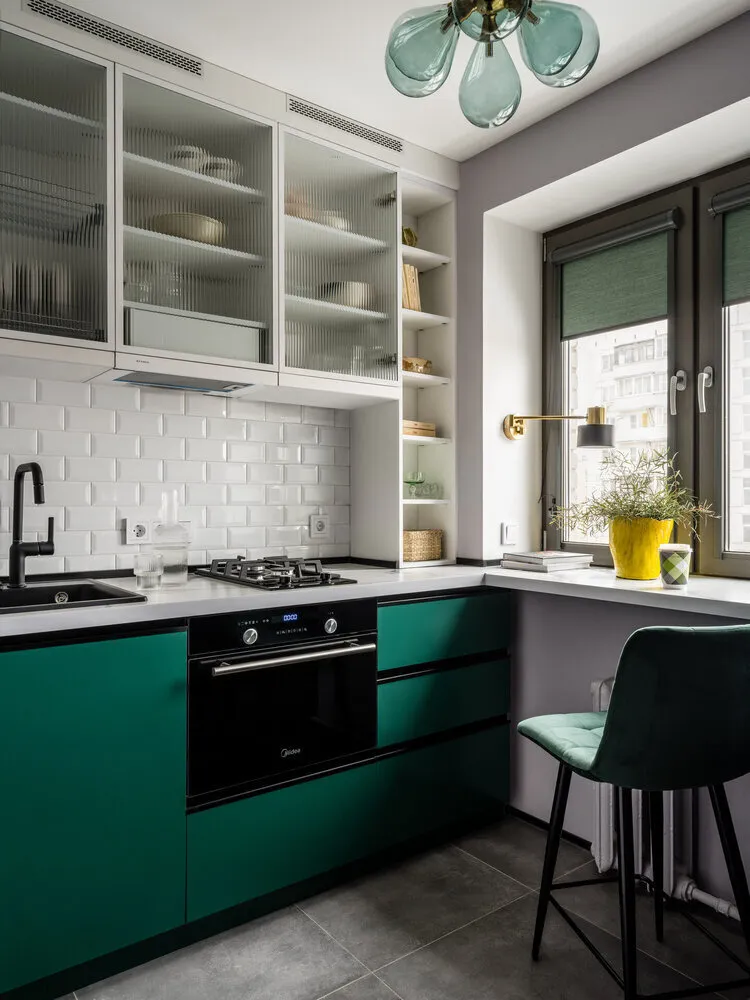
Design: Ekaterina Lyubimkina
Why Brezhnevks Are Popular Today
Breznhevks' layouts are considered more thought-out and suitable for living than in Khrushchevks. Isolated rooms, separate bathrooms, spacious kitchens — all this is still relevant today.
Breznhevks occupy the 'golden middle' of Moscow's real estate market. As experts note, they sometimes outperform new constructions for buyers who prioritize location.
If a buyer's budget is limited, they often prefer to buy a Brezhnev apartment in an established area rather than a new development in remote locations. The developed infrastructure of Soviet-era districts remains a significant advantage.
Structural reliability also plays a role. Many Brezhnevks were built more solidly than cheap modern new developments. Thick walls, strong slabs, proven technologies over time.
Modern Assessment: Pros and Cons
The main advantages of Brezhnevks over Khrushchevks are obvious: better layouts, larger areas, modern amenities. Compared to Stalin buildings, Brezhnevks win with younger age and less worn structures.
There are drawbacks too. Panel Brezhnevks lag behind brick Stalin buildings in sound and thermal insulation. In some series, utilities already need replacement.
But the market speaks for itself: Brezhnevks remain in demand. They make up a significant part of the secondary market and enjoy steady demand from buyers of all ages.
Experts note that late Brezhnevks with good layouts will appreciate faster than early series with inconvenient designs. The quality of the project is decisive for long-term prospects.
Breznhevks were a true victory of Soviet urban planning. They proved that mass housing could be not only cheap but also comfortable. Today, half a century later, these buildings continue to serve millions of families, remaining an example of a reasonable approach to designing housing for people. In the era of expensive new constructions, Brezhnevks remind us that quality housing doesn't have to be elite — it should just be well-designed.
Cover: Design project by Ekaterina Lyubimkina
More articles:
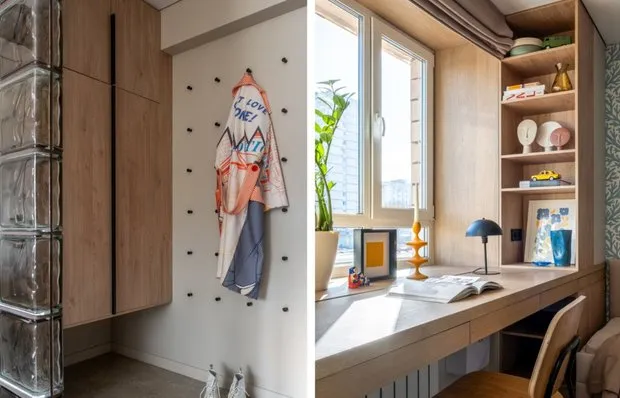 How to Store Things in a Studio Apartment: 7 Great Ideas
How to Store Things in a Studio Apartment: 7 Great Ideas How to Quickly Update Interior: 10 Trendy Finds
How to Quickly Update Interior: 10 Trendy Finds Autumn Mood in Interior Design 2025: What Will Be Trendy Starting September
Autumn Mood in Interior Design 2025: What Will Be Trendy Starting September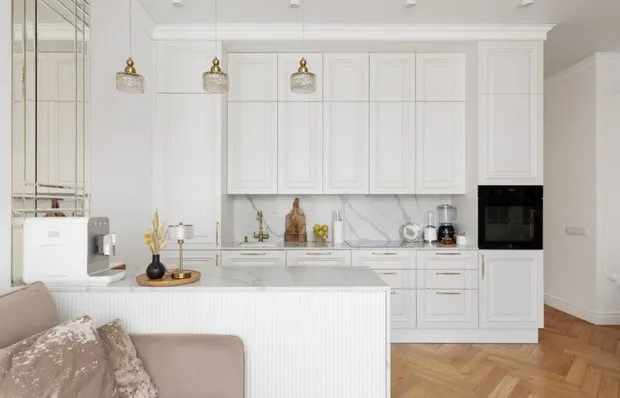 How Our Heroine Furnished a Cozy Apartment for Herself Without a Designer: Everything Thought Through to the Last Detail
How Our Heroine Furnished a Cozy Apartment for Herself Without a Designer: Everything Thought Through to the Last Detail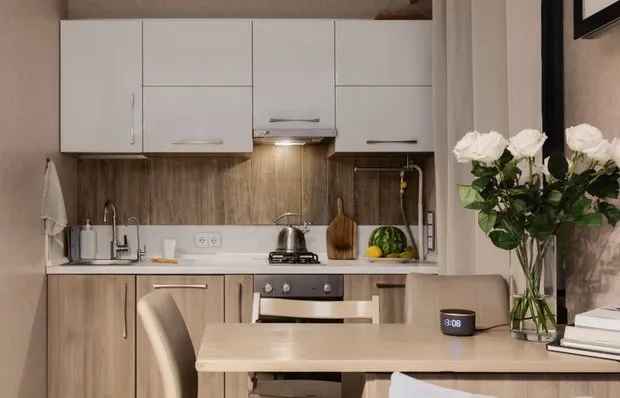 Stylish, Long-lasting, and Budget-Friendly: How Our Heroine Designed a Euro-Studio for Her Family
Stylish, Long-lasting, and Budget-Friendly: How Our Heroine Designed a Euro-Studio for Her Family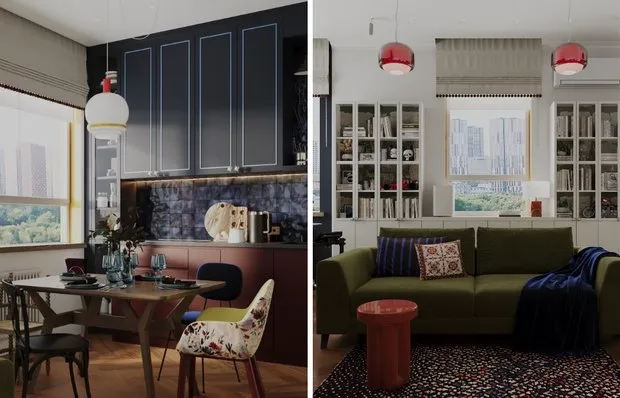 6 Secrets of Storage from a Bright Trash Design That You Should Note
6 Secrets of Storage from a Bright Trash Design That You Should Note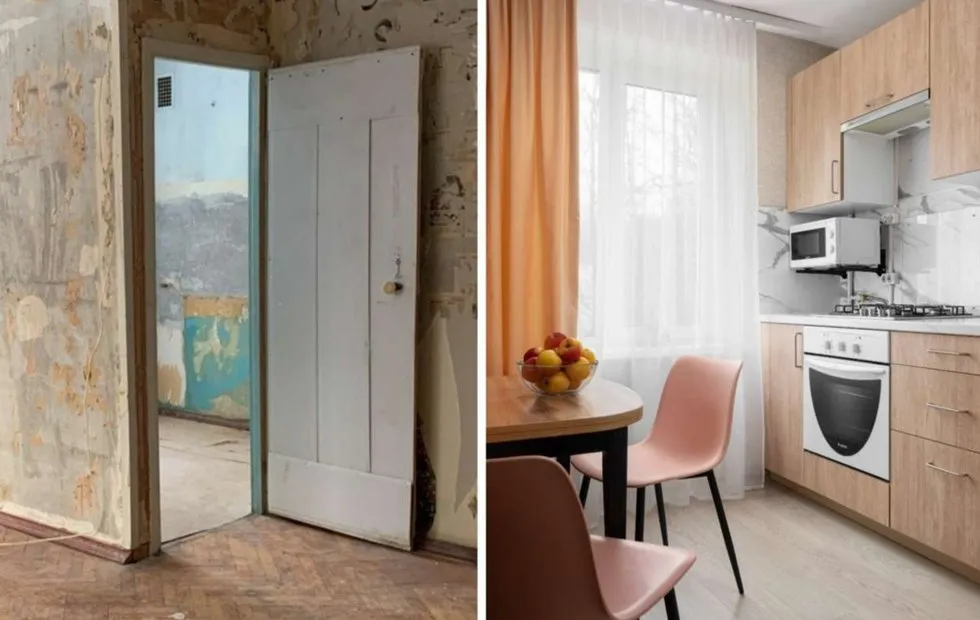 32 Square Meters in a Khrushchyovka Without Demolishing Walls: Working Layout
32 Square Meters in a Khrushchyovka Without Demolishing Walls: Working Layout How to Outshine All Moms at the Back-to-School Lineup: A Quick Guide to a Perfect Look on September 1st
How to Outshine All Moms at the Back-to-School Lineup: A Quick Guide to a Perfect Look on September 1st